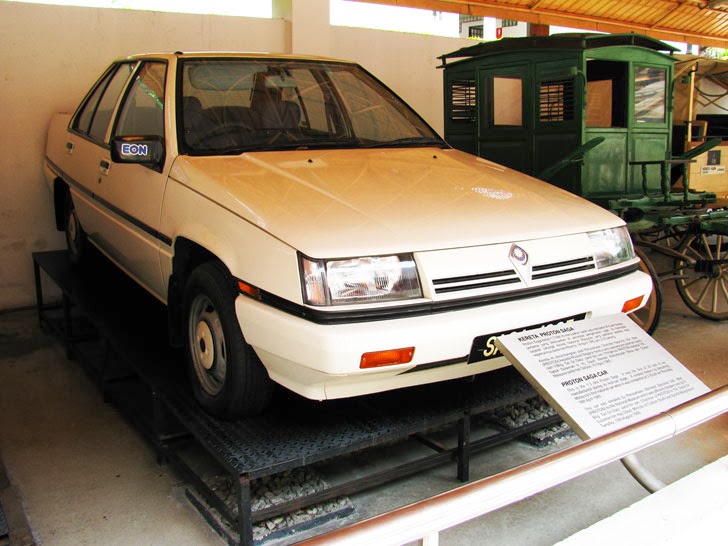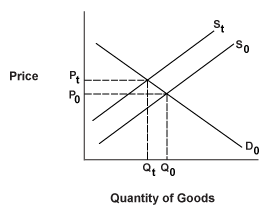Founded by the former Prime Minister of Malaysia, YAB Tun Dr. Mahathir
bin Mohamad, PROTON was established in the year 1983. PROTON in short for Perusahaan Otomobil Nasional Sendirian
Berhad, is a Malaysian automobile manufacturer. Initially, the idea of a
national car came about from Dr. Mahathir as a length to achieve a developed
nation by 2020. (Sam, 2013) This led to The National Car Project which was
approved by the Cabinet in 1982, where PROTON was officially founded in the
following year. PROTON has a headquarters in Shah Alam, Selangor as well as an
additional manufacturing plant in Tanjung Malim, Perak. PROTON being in the
automotive industry was the only national carmaker in Malaysia until the establishment
of its competitor, Perodua in 1993. With over 42% of it’s shares owned by
Khazanah Nasional Berhad, PROTON was owned by them making it government-linked,
as Khazanah Nasional was a government-owned investment company. However, the
ownership of PROTON was taken over later on by DRB-HICOM, a leading corporation
in automotive manufacturing in 2012. (Lim, 2013) In the year 1985, PROTON
manufactured it’s first car the ‘Proton Saga’ as a result from collaborating
with Mitsubishi Motors. The production of the Proton Saga was said to be the
start of the Malaysian automotive industry and has caused massive structural
changes in the industry. The entry of PROTON into the industry has seen a shift
of the domestic car market from one which depended on imported cars to one
which depended on locally made cars. Ever since the manufacture of the Proton
Saga, PROTON has now manufactured different models of vehicles, which are now
selling in the market. PROTON does not only sell in Malaysia alone, but also
runs in other countries, mainly in Asia. (Chin, 2013)
PROTON
was doing very well in terms of sales in the year 1983 when it was first
established, as it was the country’s number 1 choice in purchasing automobile
vehicles. Besides that, at that particular time PROTON faced no competitors in
the automobile industry, as it was the only local vehicle manufacturer in
Malaysia. Sales for PROTON continued increasing steadily right up till the late
1980’s as a result of a shortage of technical expertise in the field as well as
a worldwide economic recession.
Based on PROTON’s
sales graph above, it is clearly shown that sales have not been stagnant over
the years. There is a decline in sales in the year 2003 due to reduction of
import tariff by AFTA (ASEAN Free Trade Area). As prices of foreign cars go
down due to the reduction of import tariff, the demand for foreign cars
increases. In 2006, the other decline in sales by PROTON is due to the release
of Perodua’s highly sought after car Myvi in 2005, which eventually became the
best selling car in 2006. From the year 2006 up till 2011, sales of PROTON
automobiles have been steadily increasing due to the National Automotive Policy
(NAP) being introduced. One of the main objectives of the NAP is to help local
automobile companies like PROTON and Perodua survive in an ever-competitive
global environment. (MITI, 2009)
First Malaysian car; PROTON Saga
Demand
One of the main factors for quantity demanded of a car is the price. As
the National Automotive policy plans to protect the local automotive industry
by extracting tax on exports and imposing tax on imports, consumers are able to
purchase PROTON cars at a lower price.
As shown above, when the price of cars decreases from p1 to p2 and when other
determinants remains the same (ceteris paribus), there is an increase in
quantity demanded from q1 to q2, which causes a movement along the demand
curve.
The other main determinant for demand of cars is the price of
complementary goods. Petrol is a complementary good to cars and recently the
Malaysian government has imposed an increase in petrol prices. The price of
RON95 and diesel went up 20cents per litre while the price of RON97 went up by
15cents. (Lee, 2013). With the rise in price of complementary goods like
petrol, people tend to use less petrol, which results in the decrease in demand
for cars.
Based on the graph above, it is shown that when petrol prices increases,
demand for cars decreases from Q to Q1, shifting the demand curve to the left.
Supply
The law of supply states that ‘producers are willing to supply a good
only if they can at least cover their marginal cost of production’. Hence,
after the reduction in import tariff by AFTA, there was an increase in supply
of foreign cars, which ultimately decreased the supply in local PROTON cars.
This was because foreign cars became more affordable after the reduction in
import tariff. Because of the decrease in supply for local cars, PROTON reduces
production of it’s vehicles as to avoid profit loss. The decrease in supply of
PROTON cars sees a shift in the supply curve to the left from S0 to S1.
One of
the factors that affect the elasticity of demand is income. Consumers are able
to spend thousands and even millions of Ringgit Malaysia buying cars, which
makes up a rather big proportion of their income. The greater the proportion of
income consumers spends on a good, the larger is the elasticity of demand for
that good. Therefore, the price elasticity of demand for PROTON cars is
elastic. Besides that, closeness of substitute goods also affects the
elasticity of demand. Being a country that imports cars from all over the
world, there are many substitutes to PROTON cars such as Perodua, Toyota, Honda
and many more. Consumers tend to switch to alternative cars from carmakers such
as Perodua when price of PROTON car increases as they sell cars which are up to
standard at a much lower price.
Market Failure
Underproduction occurs when production is restricted and quantity is
inefficient. In 2013, PROTON was reported to have over 4,000 orders made for
the Saga SV however the amount exceeded the amount PROTON was manufacturing per
month, which is 2,000 units. Underproduction occurs as marginal social benefit
exceeds marginal social cost where consumers are willing to pay for the car but
supply is inefficient. This also causes deadweight loss to arise.
In order to encourage citizens to buy more locally made cars, the
government is increasing the tax on foreign cars, causing an increase in price.
When tax is imposed, the marginal social benefit exceeds the marginal social
cost once again causing inefficiency. This eventually causes deadweight loss to
arise.
Besides taxes, subsidies have been imposed on PROTON cars as well. That
way, PROTON is able to sell cars at a low price to a wide range of income
holders. When subsidy is imposed, the supply curve shifts to the right, where
marginal social cost exceeds marginal social benefit.
Market Structure
PROTON
belongs to the oligopolistic competition as there are a few other competitors
besides itself in the automotive industry such as local automotive company,
Perodua as well as international competitors Toyota, BMW, Mazda and so on.
Based on
the table above, it is observed that PROTON is ranked number 2 from 2010 to
2012 in terms of market share in Malaysia, right behind Perodua. As companies
in oligopoly are price settlers instead of price takers, PROTON is able to set
their price at a lower level to attract more local consumers to buy their
vehicles. PROTON is advised to take such measures in lowering prices as to keep
up with the competition with local and international competitors. Besides that,
the changes in price and quantity produced by other competitors can greatly
affect PROTON’s profits therefore PROTON should achieve the 2 types of
interdependency which is to cooperate with one another (collusion) or to
compete with one another (non-collusion). An example of collusion is PROTON’s
collaboration with Mitsubishi Motors to produce the first Malaysian car,
Citroen, Youngman and Honda.
Conclusion
With the help of import tariffs and subsidies imposed by the government,
PROTON is currently leading in Malaysia’s automotive industry. With PROTON’s
new CamPro engine, PROTON is capable in producing engines with good power
output, which meets new emission standards. Therefore, it is inevitable that PROTON
has indeed accelerate Malaysia’s industrialization capabilities to match those
of developed nations. (PROTON, 2013)
Reference List
Reference List
Chin Hua
Yik (2013) Copy about Proton. Available from:
http://prezi.com/dtuzwcdq7yom/copy-of-about-proton/
[Assessed 7 January 2013]
Lee Yen Mun (2013) RON95 petrol, diesel up 20 sen from midnight
(Update).
Available from: http://www.thestar.com.my/News/Nation/2013/09/02/ron95-up-20-sen.aspx/ [Assessed 7
January 2013]
Lim Sue Goan (2013) Proton’s Story. Available from:
http://www.themalaysianinsider.com/sideviews/article/protons-story-lim-sue-goan
[Assessed 7 January 2013]
[Assessed
7 January 2013]
Miti
(2009) Review of National Automotive
Policy. Available from:
http://www.miti.gov.my/cms/content.jsp?id=com.tms.cms.article.Article_9971dce0-c0a81573-3edb3edb-686eb8ad [Assessed 7 January 2013]
Tamar
Gabilaia (2001) Malaysian Proton and
AFTA: threat or advantage?
Available
from: http://www1.american.edu/ted/proton.htm [Assessed 7 January 2013]
Sam Chee Kong (2013) A Tale of Two Cars. Available from:








No comments:
Post a Comment